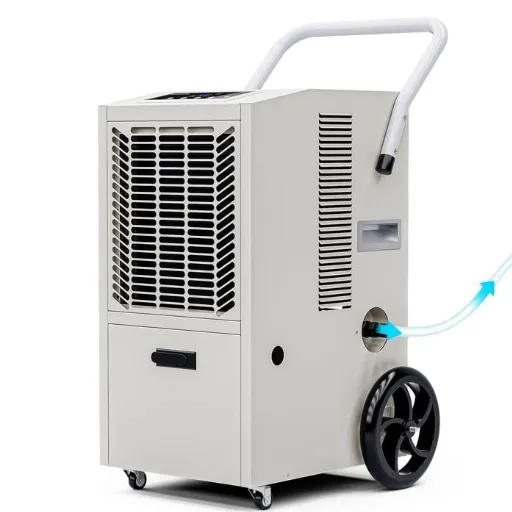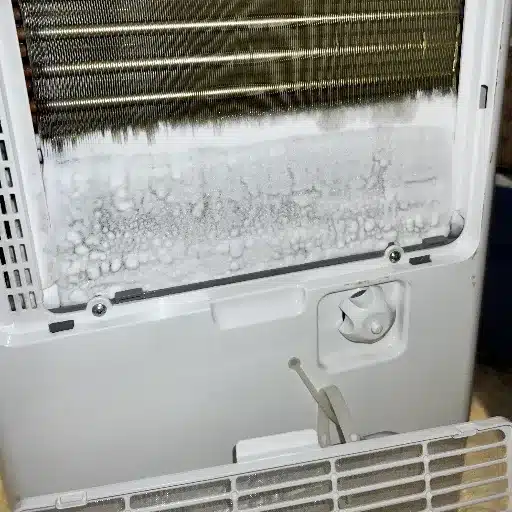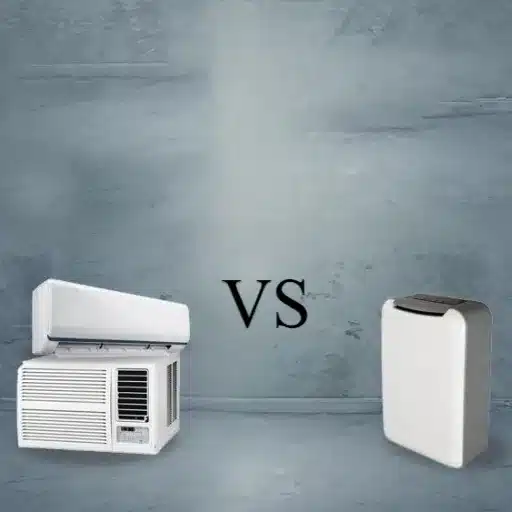Storing red wine at home can feel like a delicate balancing act, especially when it comes to managing temperature and humidity. Wine enthusiasts often strive to recreate optimal cellar conditions, but what happens when household appliances, like a dehumidifier, are introduced into the mix? Does this helpful tool risk spoiling your prized bottles or can it support ideal storage? In this article, we’ll explore how humidity impacts wine preservation, discuss whether dehumidifiers are friend or foe in this process, and share essential tips to ensure your red wine remains at its peak. Whether you’re a seasoned collector or new to wine storage, this guide will equip you with the knowledge to protect your collection with confidence.
How Does Humidity Affect Red Wine Storage?
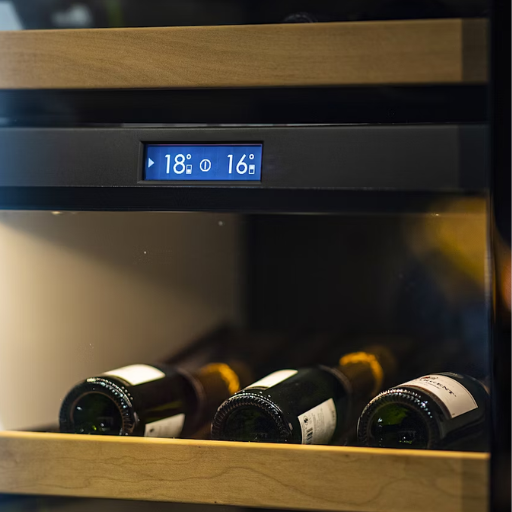
Humidity plays a crucial role in red wine storage by protecting the cork and ensuring proper aging. Ideally, the humidity level in a wine storage environment should be between 60% and 80%. Too little humidity can cause corks to dry out, leading to air seepage that may spoil the wine. On the other hand, excessive humidity can encourage mold growth on labels and corks, though it rarely harms the wine itself. Maintaining balanced humidity levels helps preserve the integrity of the wine and ensures its flavor develops as intended.
What is the Ideal Humidity Level for Storing Wine?
The ideal humidity level for storing wine typically falls between 60% and 80%, as this range helps to protect the cork from drying out while minimizing the risk of mold growth. When humidity drops below 60%, corks can shrink and allow air to enter the bottle, leading to oxidation and compromised flavor. Conversely, while excessive humidity above 80% isn’t as detrimental to the wine itself, it can damage the wine’s packaging, such as the labels, which may be important for collectors.
Recent data suggests that maintaining a consistent humidity level around 70% is optimal for most wine storage conditions. Modern wine storage solutions, such as climate-controlled wine cellars, are designed to keep both humidity and temperature within these recommended ranges. Experts also emphasize the importance of proper ventilation within storage spaces to prevent stagnant air, which can amplify humidity-related issues. By ensuring a stable environment, you can help the wine age gracefully and preserve its intended quality for years to come.
Can High Humidity Damage the Wine?
While maintaining an appropriate level of humidity is essential for proper wine storage, excessive humidity can indeed pose risks. High humidity levels, especially those exceeding 80%, can lead to several problems. One of the primary concerns is the potential damage to wine labels. Prolonged exposure to elevated moisture can cause labels to deteriorate, making the bottles difficult to identify and diminishing their aesthetic or collectible value.
Additionally, excessive humidity can encourage the growth of mold and mildew within the storage space. Mold may develop on corks, bottles, and racks, compromising not only the cleanliness of the storage environment but also the integrity of the corks. Compromised corks can lead to wine oxidation, which degrades the flavor, aroma, and overall quality of the wine.
Experts recommend maintaining humidity levels between 50% and 70% for ideal storage conditions. Technology like hygrometers can help monitor these levels with precision, while dehumidifiers can be used when necessary to lower excessive moisture. By managing humidity within the optimal range, collectors and enthusiasts can protect their wine investments and ensure the preservation of their quality over time.
How to Maintain Consistent Humidity in a Wine Cellar?
Maintaining consistent humidity in a wine cellar requires a combination of the right tools and effective strategies. First and foremost, the installation of a high-quality wine cellar cooling system is essential. These systems help regulate both temperature and humidity, creating an ideal microclimate. Look for systems that allow customization of humidity levels within the optimal range of 50% to 70%.
A reliable hygrometer is another indispensable tool. Digital models provide precise readings and can often display both current and historical humidity trends, allowing for proactive adjustments. If humidity levels drop below 50%, you can use a dedicated humidifier specifically designed for wine cellars. For example, ultrasonic or evaporative humidifiers work efficiently to introduce moisture to the air without affecting temperature.
On the other hand, if excessive moisture becomes an issue—risking mold growth or damage to labels—a dehumidifier may be necessary. Modern dehumidifiers often come equipped with adjustable settings and sensors for targeted control. They can remove excess moisture without disrupting the balanced conditions essential for wine aging.
Additionally, proper insulation and sealing of the wine cellar are critical. Ensure all doors, walls, and ceilings are sealed with vapor barriers to prevent external air and moisture from altering the cellar’s internal conditions. Double-paned, insulated glass doors and airtight seals provide an added layer of protection.
Finally, monitor your wine cellar regularly—even slight fluctuations in humidity can impact the aging process. Automated climate control systems that integrate with mobile apps now allow real-time monitoring and alerts, ensuring that changes can be addressed immediately. By investing in the right tools and staying proactive, you can protect your wine collection and maintain consistent humidity levels with confidence.
What is the Best Way to Store Wine at Home?

A wine’s storage conditions at home are best when they are kept in a stable, dark, and cool environment. The optimal temperature is around 55 degrees Fahrenheit (13 degrees Celsius), while also requiring consistent humidity of 60 to 70%, in order to keep corks from drying out or mold forming. In addition, the bottles cork seal must be wet, therefore keeping the bottles stored horizontally is best. Protecting the wine from exposure of direct light, vibrations, and strong odors is crucial when maintaining the quality of a wine. For valuable collections or long-term storage, a wine fridge or cellar is most reliable.
Should You Use a Wine Fridge or Wine Cooler?
When deciding whether to use a wine fridge or a wine cooler, it’s essential to understand their key differences and choose one that suits your storage needs. A wine fridge, also known as a wine refrigerator, is specifically designed to maintain precise temperature and humidity levels ideal for aging wine. Most wine fridges allow you to set temperatures ranging between 40°F and 65°F (4°C to 18°C), which makes them versatile for storing both red and white wines.
On the other hand, a wine cooler generally refers to devices aimed at keeping beverages cool rather than focusing on the specialized needs of wine. They often have less precise temperature control, usually maintaining ranges closer to 46°F–64°F (8°C–18°C), which might not be ideal for long-term aging or certain specific types of wine. Wine coolers may lack humidity control, which is critical for preserving cork integrity.
For those with serious wine collections or fine-aged bottles, a wine fridge is a more reliable investment as it better protects wine over time. Studies suggest that maintaining the optimal temperature and humidity for wine storage can significantly enhance the longevity of your wine. However, if your focus is on short-term storage or serving a selection at the right chill level during a gathering, a wine cooler may suffice. Additionally, wine fridges generally offer advanced features, such as dual temperature zones for separating red and white wine, LED lighting, vibration control, or UV-resistant doors, giving them a technical edge for passionate collectors.
How to Ensure Proper Temperature and Humidity?
Maintaining proper temperature and humidity is crucial for preserving the quality of your wine collection. The ideal storage temperature for wine is typically between 45°F and 65°F, with 55°F often considered the “sweet spot” for aging. Temperatures above 70°F can accelerate aging and deteriorate wine, while extremely low temperatures risk freezing and damaging the liquid or causing corks to shrink.
Humidity is equally important for preserving the cork, which acts as a natural seal. A relative humidity level between 50% and 75% is recommended, as lower humidity can dry out corks, leading to oxidation, and higher levels may encourage mold growth. To ensure these conditions, it’s essential to use a storage solution equipped with accurate temperature controls and humidity regulation. Thermostats and built-in hygrometers in wine coolers or custom wine cellars can help monitor and maintain these parameters, providing consistent conditions over time.
For wine enthusiasts aiming for optimal preservation, investing in technology that minimizes temperature fluctuations and incorporates ventilation systems can provide added peace of mind. Monitoring devices with real-time alerts are also available to notify you when adjustments are required. By controlling these factors, you can ensure your wine remains in peak condition for sipping or aging.
What are the Tips for Storing Wine in a Wine Rack?
Proper wine storage in a wine rack helps maintain its quality and flavor over time. Here are some essential tips to ensure your wine is stored effectively:
- Optimal Temperature
Keep the wine rack in a stable environment with an ideal temperature range of 45°F to 65°F (7°C to 18°C), with 55°F (13°C) being recommended for most wines. Fluctuations outside this range can harm the wine’s chemical composition and taste.
- Controlled Humidity Levels
Aim for a humidity level between 50-70%. This prevents the cork from drying out, which could allow air to seep in and spoil the wine. Too much humidity, however, can encourage mold growth and damage labels.
- Horizontal Positioning
Store bottles horizontally in the rack. This keeps the cork in constant contact with the wine, maintaining moisture levels and preventing it from shrinking or cracking, which can allow oxygen to enter.
- Avoid Light Exposure
UV light, especially from direct sunlight, can degrade wine by causing premature aging and altering its flavor. Place the wine rack in a dimly lit or dark location. For added protection, opt for UV-resistant materials or coverings.
- Minimize Vibrations
Vibrations can disturb the sediment in wine, disrupting its aging process and flavor development. Position the wine rack in a stable location away from appliances or heavy traffic areas to ensure the bottles remain undisturbed.
- Correct Bottle Alignment for Sparkling Wines
While most wines benefit from horizontal storage, sparkling wines can also be stored upright for short to medium durations due to the high internal pressure maintaining the cork’s integrity.
- Air Circulation
Ensure proper ventilation around the wine rack to prevent moisture buildup. Poor airflow can lead to musty conditions, compromising quality.
Do Dehumidifiers Cause Wine to Go Bad?
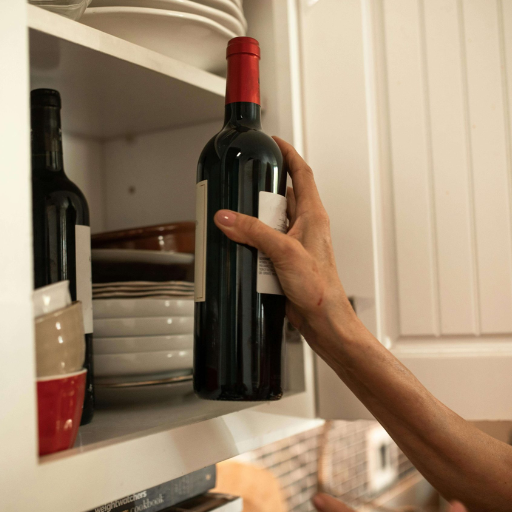
No, dehumidifiers do not cause wine to go bad when used correctly. Wine storage relies on a stable humidity level—ideally between 50% and 70%—to maintain cork integrity and prevent spoilage. Excess humidity can encourage mold, while too little can dry out corks, risking oxidation. A properly set dehumidifier helps preserve the ideal environment by reducing excess moisture without over-drying the air, thus supporting optimal wine storage conditions.
Can a Dehumidifier Affect the Cork?
The cork plays a crucial role in sealing a wine bottle and maintaining its quality over time. A dehumidifier, when used correctly, does not negatively affect the cork. Instead, it ensures that the storage environment remains within the ideal humidity range of 50% to 70%. If the humidity level drops below 50%, the cork can dry out and shrink, leading to air exposure and potential wine oxidation. On the other hand, excessively high humidity—above 70%—can encourage mold growth on the cork or wine labels, which can also compromise the bottle’s condition.
Detailed analysis of humidity control in wine cellars reveals that maintaining consistent levels reduces the risk of cork degradation. Studies indicate that cork material retains its elasticity and sealing properties optimally when the surrounding air has a relative humidity within the recommended range. Utilizing a high-quality dehumidifier equipped with precise humidity settings allows fine-tuned adjustments to create a stable environment. For long-term wine storage, continuous monitoring of both temperature and humidity is advised to support the integrity of the cork and preserve the wine’s flavor profile.
How Might a Dehumidifier Allow Air to Seep into the Bottle of Wine?
Dehumidifiers, while effective in maintaining proper humidity levels, can inadvertently create conditions that may lead to air seeping into wine bottles if not used correctly. A cork relies on the surrounding humidity to remain elastic and form a tight seal. When a dehumidifier lowers the humidity too much—below 50%—it can cause the cork to shrink or dry out. This shrinking process compromises the seal, allowing air to enter the bottle. Such exposure to oxygen can accelerate oxidation, which may degrade the wine’s flavor, aroma, and overall quality.
Evidence supports keeping relative humidity around 60-70% for optimal wine storage, as corks are less likely to dry out in this range. Studies show that cork elasticity can begin to diminish at sustained humidity levels below 50%, especially over extended periods. Consequently, using a dehumidifier without precise monitoring tools may result in unintended fluctuations that endanger wine preservation. Therefore, incorporating hygrometers alongside a dehumidifier can ensure close observation of humidity, preventing conditions that promote cork deterioration and air infiltration.
What are the Signs that Wine May be Spoiled?
Identifying spoiled wine can help prevent unpleasant tasting experiences and ensure that wine is consumed at its best quality. Here are some key signs to watch for:
- Unpleasant Odor: A strong smell of vinegar, wet cardboard, or musty basement can indicate spoilage. This often results from oxidation or contamination by cork taint (caused by TCA compounds) affecting up to 3–5% of bottled wines.
- Change in Color: Oxidized wines may turn a dull brown for whites or brick-like hues for reds, deviating sharply from their natural vibrant tones. This discoloration points to prolonged exposure to air or improper storage conditions.
- Presence of Bubbles: If bubbles are present in a still wine, it might suggest unwanted fermentation caused by active microbes. This is an immediate signal that the wine is no longer safe to drink as expected.
- Cork Condition: A cracked or crumbled cork may have allowed air to seep into the bottle, accelerating spoilage. Conversely, a cork that has pushed out of the neck may point to excessive heat exposure.
- Off Taste: Spoiled wine often exhibits sour, overly sweet, or metallic flavors not aligned with the wine’s natural profile. It’s typically the most reliable indicator for casual wine drinkers.
- Cloudiness or Sediment: While some unfiltered wines naturally have sediment, unexpected haziness in a clear wine may be a sign of microbial contamination or instability.
What is the Ideal Temperature for Wine Storage?
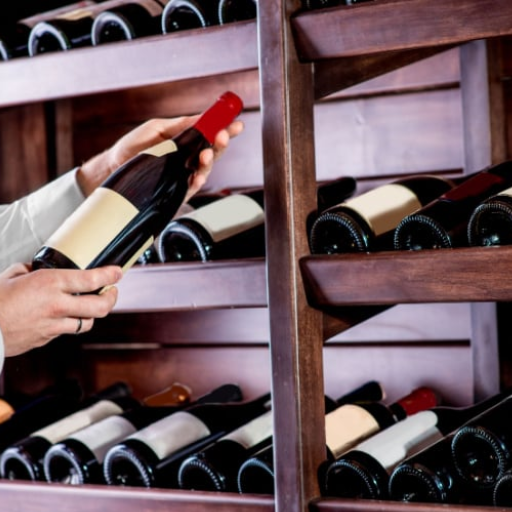
The ideal temperature for wine storage is between 45°F and 65°F (7°C and 18°C), with a sweet spot around 55°F (13°C) for most wines. This range helps preserve the wine’s flavor, aroma, and overall quality by preventing rapid aging and spoilage. It’s important to avoid extreme fluctuations in temperature, as these can cause the wine to expand and contract, potentially damaging the cork and allowing air to seep in. Consistency in storage conditions is key to maintaining the integrity of the wine over time.
How to Keep a Consistent Temperature for Red Wine?
Keeping the red wine at the right temperature is important for its taste and to maintain the structure. One step towards achieving it is acquiring a wine cooler or refrigerator, which maintains optimal temperature and contains precise digital controls. These devices allow users to set the temperature anywhere between 50°F to 65°F (10°C to 18°C), ensuring a stable environment without external changes.
If a wine refrigerator is not an option, then a controlled room or a basement, places with the least changeable temperatures, are essential. Insulated wine cabinets and racks can also buffer wine bottles from sudden changes. Avoiding locations prone to direct sunlight or everyday movement, such as kitchens and windows, also help as even repeating warmth can lower wine quality over time.
Using a wine thermometer further increases assurance in measuring the storage environment. Actively tracking temperature allows action to be taken if conditions shift from ideal. With proper tools and controlled monitoring, the quality and life of red wine can be extended for years.
Does Temperature Fluctuations Degrade and Prematurely Age Wine?
Temperature fluctuations are one of the most significant threats to the longevity and quality of wine. Frequent changes in temperature can cause the liquid inside the bottle to expand and contract. This process forces air into the bottle through the cork, exposing the wine to oxygen. Even minor oxygen exposure over time can lead to oxidation, degrading the wine’s flavor, aroma, and balance.
Research shows that wine stored in conditions where the temperature varies widely, such as shifting between 45°F (7°C) and 75°F (24°C), can age prematurely and lose its intended character. A consistent storage temperature, ideally around 55°F (13°C), is widely regarded as optimal for both short-term and long-term preservation. Fluctuations beyond a range of 5°F (about 2-3°C) can be particularly harmful, as they interfere with the wine’s delicate chemical stability.
Additionally, higher temperature peaks—such as those above 68°F (20°C)—can accelerate spoilage by boosting microbial activity and hastening chemical reactions within the wine. Studies have demonstrated that wines exposed to temperatures above 77°F (25°C) for prolonged periods can develop faults such as “cooked” flavors and faded complexity.
Maintaining stable storage conditions is essential to preserving the integrity and aging potential of your wine collection. Leveraging tools like temperature-controlled wine coolers or cellars can provide the necessary climate stability, guarding your wines from many of the adverse effects caused by temperature fluctuations.
How to Store Red Wine for Long-Term Storage?
Proper storage of red wine ensures that its flavor, aroma, and structure are preserved over time, allowing the wine to mature gracefully. Below are key guidelines and data-backed practices for long-term red wine storage:
- Temperature Control is Crucial
Red wine storage requires a consistent temperature between 55°F and 65°F (12°C to 18°C). Fluctuations outside this range can accelerate aging and spoil the wine. Studies suggest that wines stored in stable conditions tend to age more predictably, with fewer risks of developing off-flavors. Avoid placing wine near appliances, direct sunlight, or areas prone to sudden temperature changes.
- Optimal Humidity Levels
Maintaining a relative humidity level of approximately 60%-70% is ideal. This helps prevent corks from drying out, which could lead to oxidation. Conversely, excessive humidity may encourage mold growth on the labels and corks but generally doesn’t harm the wine itself.
- Positioning Matters
Store wine bottles horizontally, especially those with natural corks. This keeps the cork moist, preventing it from shrinking and allowing air to seep into the wine. For bottles with screw caps, horizontal or vertical storage is fine as long as other conditions are met.
- Protect From Light
Ultraviolet (UV) light from sunlight or fluorescent lights can degrade wine over time, affecting its taste and aroma. This phenomenon is sometimes referred to as “lightstrike.” To avoid this, store wine in dark, enclosed spaces or opt for UV-resistant glass on your cellar or cooler doors.
- Limit Vibrations
Vibrations can disturb the sediment in wine, adversely affecting its maturation process. Ensure your storage area is free from heavy foot traffic, machinery, or anything causing consistent movement.
- Use a Wine Refrigerator or Cellar
For enthusiasts unable to maintain perfect conditions naturally, wine coolers and professional-grade cellars provide reliable options. Look for units with precise temperature control, minimal vibrations, and sufficient storage capacity for your collection.
How to Prevent Mold Growth in a Cellar?
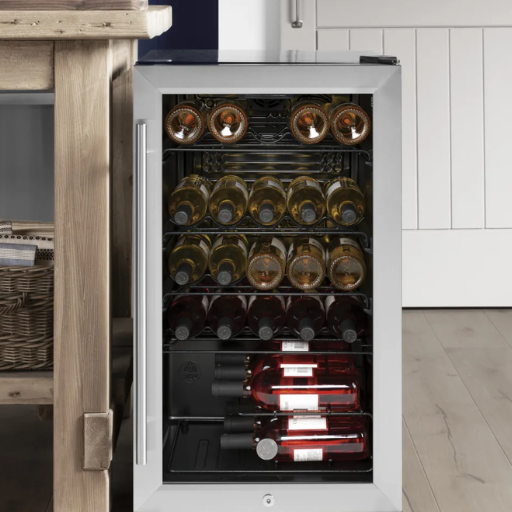
- Control Humidity Levels
Maintain a consistent humidity level between 50-70% using a hygrometer and a dehumidifier if needed. Excessive humidity creates ideal conditions for mold growth.
- Ensure Proper Ventilation
Good airflow prevents stagnant air and reduces moisture buildup. Consider installing ventilation systems or using fans to promote air circulation.
- Minimize Moisture Sources
Check for leaks or water damage in walls, floors, or ceilings. Seal any cracks and repair issues promptly to prevent dampness.
- Clean Regularly
Remove dust and debris from surfaces to prevent mold spores from settling. Use mold-resistant cleaning solutions for added protection.
- Store Wine and Materials Wisely
Avoid using organic materials like untreated wood that can retain moisture and contribute to mold growth.
By applying these simple but effective measures, you can protect your cellar from mold while maintaining the quality of your wine collection.
How Does High Humidity Promote Mold?
High humidity creates an environment that is highly conducive to mold growth due to the increased level of moisture in the air. When humidity levels rise above 60%, water vapor can condense on various surfaces, creating damp conditions that mold needs to thrive. Mold spores, which are naturally present in the air, attach themselves to these moist surfaces and begin to grow, feeding on organic materials such as wood, paint, or even labels on wine bottles. Research indicates that maintaining indoor humidity below 50% significantly reduces the risk of mold proliferation.
Additionally, poorly ventilated spaces exacerbate the problem by trapping this excess moisture, especially in enclosed areas like wine cellars. Such conditions not only compromise structural integrity over time but can also produce musty odors and even pose health risks. To combat this, using dehumidifiers and ensuring adequate ventilation are key strategies in maintaining the ideal environment for both wine preservation and mold prevention.
What are the Best Practices to Prevent Mold?
To effectively prevent mold growth, it is crucial to address both moisture control and environmental conditions. Here are some of the best practices:
- Maintain Indoor Humidity Levels
Keep humidity levels below 60%, with an ideal range between 30-50%. You can achieve this by using dehumidifiers or air conditioners, particularly in humid climates. Regularly monitor humidity using a hygrometer to ensure it remains within the optimal range.
- Ensure Proper Ventilation
Ventilation plays a critical role in reducing moisture buildup. Use exhaust fans in high-moisture areas like kitchens, bathrooms, and laundry rooms. For spaces like basements or attics, installing ventilation systems or opening windows can help maintain better airflow.
- Fix Water Leaks Promptly
Repair any leaking pipes, faucets, or roofs immediately to prevent water accumulation. Even small leaks can lead to significant mold growth over time if untreated. Inspect areas prone to water damage regularly, such as under sinks or around windows.
- Seal and Waterproof Potential Problem Areas
Apply waterproof sealants to cracks in walls, floors, or foundations. This can prevent seepage of external moisture. Additionally, consider using mold-resistant drywall or paint in areas that are often damp to add an extra layer of protection.
- Promptly Dry Wet Materials
Mold can begin to grow within 24-48 hours on damp materials. If flooding occurs or water spills are left unnoticed, ensure surfaces and materials like carpets, rugs, or upholstered furniture are dried immediately. Use fans and other drying tools for faster results.
- Clean and Maintain HVAC Systems
HVAC filters can trap dust and moisture, creating a breeding ground for mold. Replace filters regularly and schedule professional duct cleaning to limit mold and dust buildup. Consider using a filter or air purifier in your unit equipped to handle mold spores.
- Declutter and Keep Surfaces Clean
Mold thrives on organic material like paper and fabrics. Keep areas free of clutter, especially in storage spaces, as items packed too tightly can limit airflow. Dust and clean surfaces frequently to remove spores and prevent growth.
- Direct Water Away From Your Home
Ensure that your property’s drainage system is functioning efficiently. Use gutters and downspouts to direct water away from your foundation and ensure the ground slopes away from your home. This reduces the chances of water pooling and seeping inside.
Can a Pan of Water Help in Regulating Humidity?
Using a pan of water to regulate indoor humidity can be effective in certain situations, especially in small, enclosed spaces. When the water in the pan evaporates into the air, it increases the humidity level, which can be particularly helpful during dry seasons or in homes with central heating, as these conditions tend to decrease indoor humidity significantly.
For instance, placing a shallow pan of water near a heat source, such as a radiator or stove, enhances the evaporation process, allowing moisture to disperse more effectively into the air. Research indicates that indoor humidity levels should ideally remain between 30% and 50% for optimal comfort and health. Below 30%, the air can feel too dry, potentially causing respiratory issues, dry skin, and an increased risk of static electricity. While a pan of water may not be sufficient to humidify a large area consistently, it can work as a simple and low-cost solution to elevate humidity incrementally in smaller spaces.
For a more controlled approach, pairing the pan of water method with a hygrometer to measure the room’s relative humidity can help ensure that the desired range is maintained. However, for larger rooms or severe humidity imbalances, a dedicated humidifier may be a better long-term solution.
Reference Sources
-
Study: “Intensity of rivalry among existing competitors in the wine-making branch”1
- Relevance: This study briefly mentions the importance of maintaining optimal air humidity (60-80%) for wine storage to prevent vaporization or molding. However, it does not specifically address the impact of dehumidifiers on red wine.
- Key Findings: The study focuses on competitive dynamics in the wine industry, emphasizing factors like market share, production costs, and differentiation. It highlights that maintaining proper storage conditions, including humidity, is crucial for wine quality.
- Methodology: The research uses Porter’s Five Forces model to analyze competition in the wine industry and includes data on wine production and storage practices.
Frequently Asked Questions (FAQs)
Q: Can a dehumidifier spoil red wine?
A: A dehumidifier itself does not spoil red wine, but it can affect the storage environment. It’s important to maintain the ideal humidity level to keep your wine in good condition. Extremely low humidity can cause corks to dry out, which may let air into the bottle and damage the wine.
Q: How does a dehumidifier affect wine storage?
A: A dehumidifier can affect wine storage by altering the humidity levels in the storage area. Ideally, wine should be stored at 50-70% humidity. Too much dryness can lead to cork shrinkage, which might ruin the wine by allowing air to seep in and affect the wine’s quality.
Q: What is the best temperature to store your wine?
A: The best temperature to store your wine is typically between 45-65°F (7-18°C). Temperature variations should be minimal to prevent the wine from aging improperly. Consistency is key to maintaining the quality of both red and white wines.
Q: Should wine be stored on their sides?
A: Yes, wine should be stored on their sides to keep the cork moist. This prevents the cork from drying out and minimizes the risk of air exposure, which can cause the wine to go bad. This is especially important for older wines.
Q: Does a dehumidifier damage wine labels?
A: A dehumidifier can potentially damage wine labels if the environment becomes too dry, causing them to peel off. To prevent this, maintain a balanced humidity level and monitor the condition of the wine labels regularly.
Q: Can I use a dehumidifier to prevent wine from going bad?
A: While a dehumidifier can help control humidity levels, it alone cannot prevent wine from going bad. A comprehensive approach, including proper temperature control and storage techniques, is necessary to maintain the quality of your wine collection.
Q: Is it okay to store wine in the fridge?
A: Storing wine in the fridge is suitable for short-term storage, especially for white wine and sparkling wine. However, for long-term storage, this is not ideal as the cold temperature and lack of humidity can damage the cork and affect the wine’s aging process.
Q: What types of wine are more sensitive to storage conditions?
A: Fine wine and older wines are more sensitive to storage conditions. These types of wines like stable environments with consistent temperature and humidity to age a wine properly and preserve its quality over time.
Q: How can collecting wine benefit from a dehumidifier?
A: A dehumidifier can benefit wine collection by maintaining appropriate humidity levels, preventing corks from drying out, and preserving the condition of the wine. It’s an essential tool for creating a stable environment for storing valuable bottles.
Q: What should I do if my wine storage area is too dry?
A: If your wine storage area is too dry, place a pan of water in the area to increase humidity or adjust your dehumidifier settings. Ensuring proper humidity is crucial to prevent cork damage and to keep wine away from spoilage due to air exposure.

